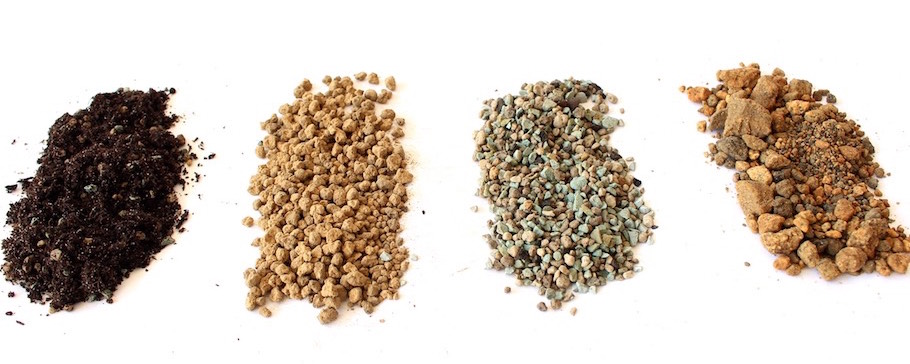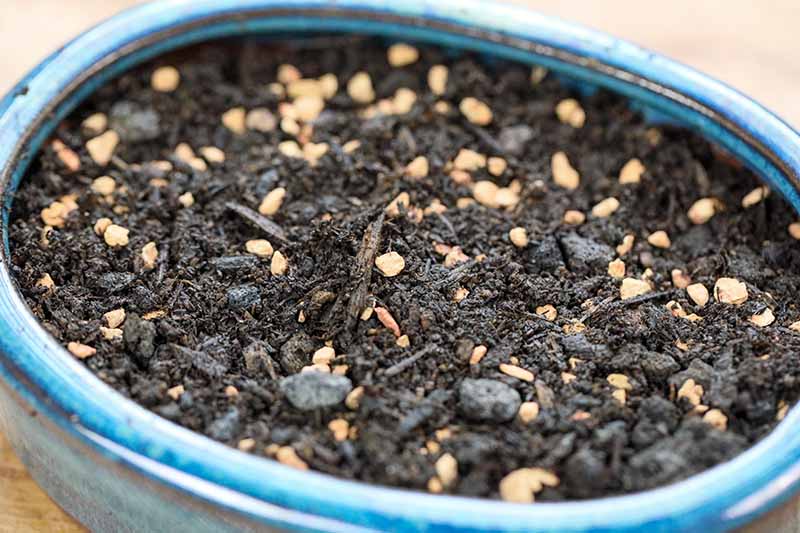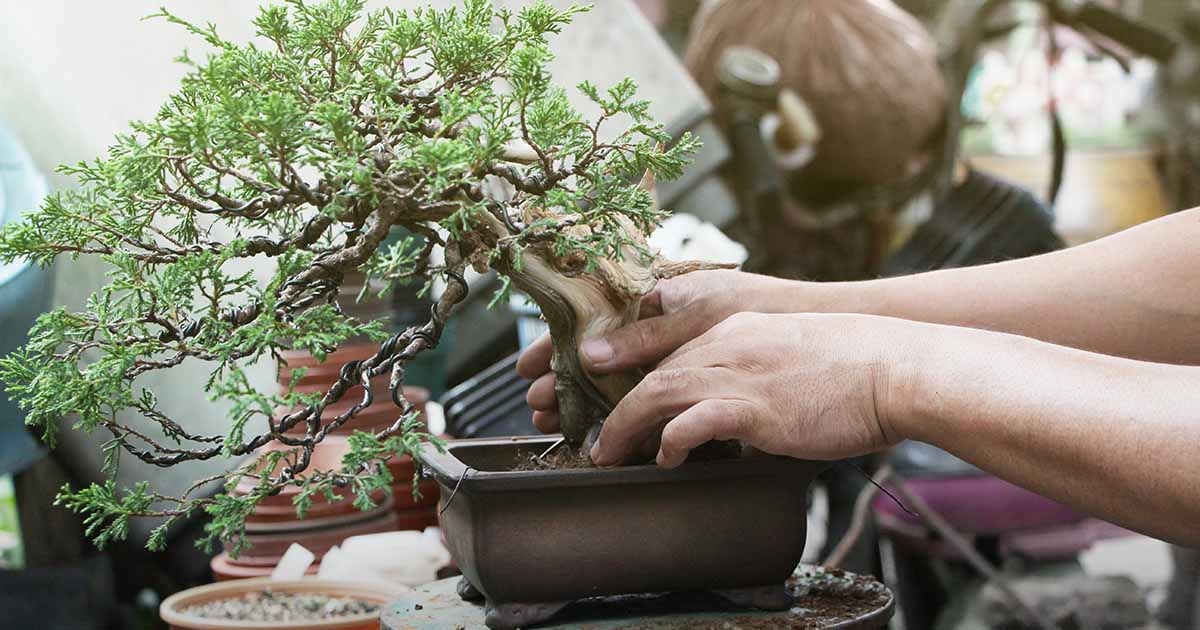In the following paragraphs, we will discover the differing types of soil and substrates Utilized in bonsai cultivation, which includes organic and inorganic selections.
We will also uncover advised soil mixtures for numerous bonsai species, which include deciduous, coniferous, and indoor kinds. From akadama and pumice to moss and river sand, we'll dive in the fascinating environment of bonsai soil and make it easier to understand why It can be a crucial part of cultivating these exquisite trees.

Bonsai soil
What is bonsai soil?
Bonsai soil is a specialized type of soil that is specifically formulated for growing and maintaining bonsai trees. Unlike regular garden soil, bonsai soil is well-draining and provides the necessary nutrients and moisture balance for the tree's root system. The composition of bonsai soil is carefully designed to meet the unique needs of bonsai trees, ensuring their health and longevity.
The importance of bonsai soil
The choice of soil plays a crucial role in the success of your bonsai tree. The right soil provides optimal drainage, allowing excess water to flow freely and preventing root rot. It also promotes a healthy and well-developed root system, which is essential for the overall health and growth of the tree. Bonsai soil retains moisture while allowing air to reach the roots, striking the perfect balance for the tree's needs. Choosing the right bonsai soil is essential for maintaining a healthy and thriving bonsai tree.
Bonsai substrates
What are bonsai substrates?
Bonsai substrates refer to the different materials that can be used to create the ideal soil composition for bonsai trees. These substrates are carefully chosen to meet the specific needs of different species of bonsai trees and to ensure proper water drainage and nutrient availability.
Different types of bonsai substrates
There are various types of bonsai substrates available, each with its own unique characteristics and benefits. Some common bonsai substrates include:
- Organic materials: These include ingredients such as bark, peat moss, and coconut coir. Organic substrates help retain moisture and provide essential nutrients to the bonsai tree.
- Inorganic materials: These include factors like pumice, lava rock, and akadama. Inorganic substrates supply excellent drainage, guaranteeing that excessive drinking water doesn't accumulate across the roots of your bonsai tree.
- Soil amendments: These are generally substances that are added for the soil combination to improve its Qualities. Samples of soil amendments involve perlite, vermiculite, and sand. They improve the soil's aeration, drinking water-Keeping capacity, and nutrient availability.
By knowing the differing types of bonsai substrates as well as their Attributes, you are able to pick out the most suitable one particular for your personal bonsai tree's requirements.
Natural and organic or Inorganic Soils
Organic soils for bonsai
Natural soils for bonsai are made up of all-natural materials like bark, peat moss, coconut coir, and compost. These elements give a wealthy supply of nutrients to the bonsai tree and promote healthful root growth. Natural and organic soils also have excellent drinking water retention Houses, making sure which the tree receives sufficient moisture among watering sessions. On the other hand, it is vital to notice that organic soils might break down after a while and become compacted, bringing about poor drainage and possible root problems.
Inorganic soils for bonsai
Inorganic soils for bonsai include elements like pumice, lava rock, akadama, and soil amendments like perlite or vermiculite. These elements have great drainage Attributes, protecting against waterlogged soil and marketing aeration within the roots. Inorganic soils are favored by numerous bonsai enthusiasts due to their longevity and skill to deliver a secure ecosystem with the bonsai tree's root system. Having said that, they may require more Recurrent watering and extra fertilization, as they don't maintain as much moisture or nutrients as natural and organic soils.
Benefits and drawbacks of applying organic and natural and inorganic soils for bonsai
Picking in between organic and inorganic soils for your bonsai tree depends on numerous things, such as the certain species of tree, your climate, and private preferences. Here are the advantages and drawbacks of every:
Natural and organic soils:
- Pros: Deliver nutrients, fantastic drinking water retention, promote healthier root growth.
- Disadvantages: May stop working with time, potential for lousy drainage Otherwise effectively maintained.
Inorganic soils:
- Execs: Superb drainage, extensive-lasting, secure surroundings for roots.
- Drawbacks: Considerably less water retention, may well call for more Regular watering and fertilization.
By considering the pluses and minuses of each organic and natural and inorganic soils, you can make an knowledgeable conclusion dependant on the particular requires of one's bonsai tree.
Soil parts
Vital components of bonsai soil
Bonsai soil is often made up of three principal factors: grit, organic issue, and clay. These parts function jointly to generate The perfect soil construction for that bonsai tree's root procedure.
- Grit: Grit, like sand or perlite, supplies drainage and aeration from the soil. It can help prevent waterlogging and permits air to reach the roots.
- Organic and natural subject: Natural and organic issue, for example compost or bark, provides nutrients towards the bonsai tree. In addition, it will help keep dampness and Enhance the soil's Total framework.
- Clay: Clay particles deliver some h2o retention characteristics and aid bind the soil collectively. On the other hand, far too much clay may lead to weak drainage and compaction.
Role of each soil component
Each soil ingredient performs a vital function in creating a nicely-well balanced and healthful setting for that bonsai tree's roots.
- Grit: Grit delivers the required drainage and aeration during the soil. It stops the roots from sitting in stagnant water, decreasing the risk of root rot and advertising General root well being.
- Natural and organic subject: Natural make a difference offers essential nutrients to the bonsai tree. It aids in humidity retention and contributes to the overall structure of your soil.
- Clay: Clay particles support bind the soil collectively and provide some drinking water retention capacity. Nevertheless, it is vital to harmony the quantity of clay in order to avoid concerns like bad drainage and compaction.
By understanding the roles of each soil element, you'll be able to create a well balanced bonsai soil combine that fulfills the particular requirements of one's tree.

Recommended Bonsai soil mixtures
Common bonsai soil mixtures
There are several common bonsai soil mixtures that have been proven effective for various types of bonsai trees. These mixtures typically consist of a combination of inorganic substrates, organic matter, and soil amendments.
Some of the commonly used bonsai soil mixtures include:
- Akadama, pumice, and lava rock: This mixture is popular among bonsai enthusiasts for its excellent drainage and water retention properties.
- Akadama, lava rock, and organic make a difference: This combination combines the key benefits of inorganic substrates Using the nutrient-loaded Homes of organic issue.
- Pumice, perlite, and bark: This mixture delivers excellent drainage and aeration though retaining some dampness and giving nutrients.
They're just some examples of bonsai soil mixtures, and The perfect combination will rely on the specific demands of your bonsai tree and also your climate.
Variables to consider when deciding upon a bonsai soil mixture
When deciding on a bonsai soil combination, it's important to take into consideration the next elements:
- Species of bonsai tree: Various species have diverse humidity and nutrient specifications. Exploration the precise desires of your tree to pick a soil combination that meets its demands.
- Local climate: The weather you reside in can impact the dampness retention Homes in the soil. Consider the regular humidity and temperature close to you when choosing a soil mixture.
- Watering behavior: Your individual watering patterns and regime should really align with the soil mixture you decide on. Some mixtures have to have extra Recurrent watering, while some keep humidity for for a longer period periods.
- Budget: Some soil components might be more expensive than Other individuals. Take into account your spending plan when choosing a soil combination.
By getting these things under consideration, you could decide on a bonsai soil combination that gives the top rising problems on your tree.
Deciduous Bonsai soil
Ideal soil composition for deciduous bonsai
Deciduous bonsai trees, including maple or birch, have distinct soil specifications to assistance their development and health. The best soil composition for deciduous bonsai typically includes a mix of natural and organic make any difference, inorganic substrates, and soil amendments.
A encouraged soil composition for deciduous bonsai may possibly involve:
- Akadama: Gives very good water retention while permitting for drainage. Additionally, it releases nutrients slowly and gradually with time.
- Pumice: Promotes aeration and drainage from the soil, avoiding waterlogging.
- Bark or peat moss: Provides organic and natural matter into the soil, supplying nutrients and humidity retention.
This soil composition ensures that the roots of deciduous bonsai trees acquire the best balance of dampness, nutrients, and oxygen for exceptional growth.

Coniferous and Pine soil
Ideal soil mixture for coniferous and pine bonsai
Coniferous and pine bonsai trees have specific soil requirements due to their water retention needs and preference for acidic soil. An ideal soil mixture for coniferous and pine bonsai should provide good drainage while retaining moisture and maintaining the desired pH level.
A recommended soil mixture for coniferous and pine bonsai may include:
- Akadama: Provides excellent water retention while allowing for sufficient drainage. It releases nutrients slowly over time.
- Pumice: Encourages aeration and drainage within the soil, blocking waterlogged roots.
- Peat moss: Adds organic and natural make a difference and acidity to your soil, producing a super pH degree for coniferous and pine trees.
This soil combination ensures that the roots of coniferous and pine bonsai trees get the right stability of humidity, nutrients, and acidity for their precise requirements.
Akadama
Exactly what is akadama?
Akadama is actually a variety of clay soil that's commonly used in bonsai cultivation. It truly is noted for its excellent drinking water retention Attributes, which assure a gradual provide of humidity into the bonsai tree's roots. Akadama can also be prized for its capacity to release nutrients slowly but surely after some time, giving a constant source of nourishment for your tree.
Benefits of using akadama in bonsai soil
Applying akadama in bonsai soil gives various Gains:
- H2o retention: Akadama has Outstanding drinking water retention Homes, allowing for it to hold moisture without having becoming waterlogged. This makes sure that the bonsai tree's roots get a continual source of h2o, promoting wholesome progress.
- Nutrient release: Akadama slowly and gradually releases nutrients in the soil eventually, providing a consistent source of nourishment for the bonsai tree. This reduces the necessity for Repeated fertilization and can help retain a well balanced nutrient profile.
- Aeration: Irrespective of its h2o retention abilities, akadama also supplies ample aeration on the bonsai tree's roots. It makes it possible for air to reach the root system, preventing challenges which include root rot resulting from deficiency of oxygen.
By incorporating akadama website in the bonsai soil, it is possible to develop an ideal developing surroundings to your tree, ensuring its well being and vitality.

Lava rock
How lava rock benefits bonsai soil
Lava rock is a popular component in bonsai soil mixtures due to its excellent drainage and aeration properties. It is typically used in conjunction with other substrates to create the ideal soil composition for bonsai trees.
The benefits of lava rock in bonsai soil include:
- Drainage: Lava rock provides excellent drainage, preventing waterlogging and ensuring that excess water flows freely through the soil. This helps prevent root rot and provides a healthy environment for the roots to thrive.
- Aeration: The porous nature of lava rock will allow air to circulate within the soil, furnishing oxygen to your bonsai tree's root technique. Appropriate aeration is crucial for balanced root growth and General tree advancement.
- Longevity: Lava rock is often a sturdy material that doesn't break down simply. This ensures that the soil composition stays stable eventually, minimizing the need for Repeated soil replacements.
Lava rock is offered in different measurements and styles, enabling for customization based upon the specific requires of the bonsai tree and soil prerequisites.
Differing types of lava rock
There are differing types of lava rock that can be read more Utilized in bonsai soil mixtures, together with:
- Black lava rock: Black lava rock is actually a generally utilized materials in bonsai soil mixtures. It offers superb drainage Houses and adds an aesthetic factor to the general presentation of the bonsai tree.
- Pink lava rock: Crimson lava rock is an additional popular selection in bonsai soil mixtures. It provides similar drainage and aeration Rewards as black lava rock but has a definite reddish color that adds visual curiosity to the container.
Both equally black and red lava rocks are broadly out there and can be simply included into your bonsai soil combination.
Potting
Essential techniques for prosperous bonsai potting
Potting can be a vital course of action in bonsai cultivation, since it directly impacts the wellness and growth with the tree's roots. Below are a few essential strategies for profitable bonsai potting:
- Select the appropriate pot dimensions: Pick out a bonsai pot which allows for root advancement while still providing a snug in good shape. Steer clear of pots which can be way too massive, because they can cause excessive soil moisture and very poor root progress.
- Use bonsai wire: Safe the tree while in the pot making use of bonsai wire to make certain balance. This prevents the tree from shifting or turning out to be uprooted in the course of watering or robust winds.
- Trim and spread the roots: Right before potting the bonsai tree, carefully trim and distribute out the roots. This encourages outward expansion and stops root tangling or root-sure issues.
- Add mesh screens: Area mesh screens above the drainage holes at the bottom of the pot to circumvent soil erosion and guarantee good drainage.
- Use refreshing bonsai soil: When potting, normally use contemporary bonsai soil to offer the necessary nutrients and optimal escalating problems for your roots.
By following these crucial strategies, it is possible to make certain a successful potting system and encourage the overall health and fitness and progress of your respective bonsai tree.
The position of bonsai pots in soil moisture Regulate
Bonsai pots Engage in a crucial purpose in soil moisture Management, immediately impacting the health and expansion of your tree. Bonsai pots are usually shallow and possess drainage holes, making it possible for excessive water to flee and stopping the soil from turning into waterlogged.
The look of bonsai pots encourages evaporation and air circulation, which assists control soil moisture concentrations. The shallow depth and extensive opening on the pot expose additional floor spot from the soil for the air, aiding in dampness evaporation. This stops the roots from sitting in excessively wet soil, lessening the chance of root rot along with other water-similar difficulties.
In addition, the drainage holes in bonsai pots allow for any excess drinking water to flee, protecting against waterlogged soil and advertising aeration round the roots. Right aeration is essential for the wellness and progress of the root method, guaranteeing the bonsai tree gets the mandatory oxygen for growth.
By utilizing bonsai pots made for productive humidity Command, you are able to develop a good setting for your personal bonsai tree's roots and promote its General overall health and vitality.
In conclusion, selecting the suitable bonsai soil is significant for that achievements and health of one's bonsai tree. Comprehension the different sorts of bonsai substrates, the job of organic and natural and inorganic soils, The real key factors of bonsai soil, and the various recommended soil mixtures can help you offer the optimum developing situations to your bonsai tree. Whether there is a deciduous or coniferous bonsai, incorporating materials like akadama and lava rock can enhance the soil's drainage and nutrient availability. Additionally, taking note of potting procedures and applying bonsai pots created for dampness Handle will more help the thriving expansion of the bonsai tree. With correct comprehending and implementation of bonsai soil practices, you could benefit from the attractiveness and artistry of bonsai cultivation For many years to come.
